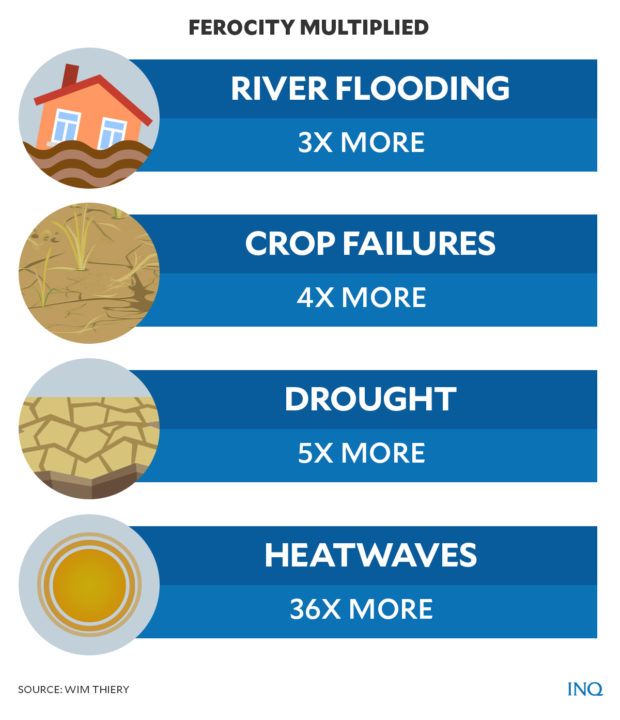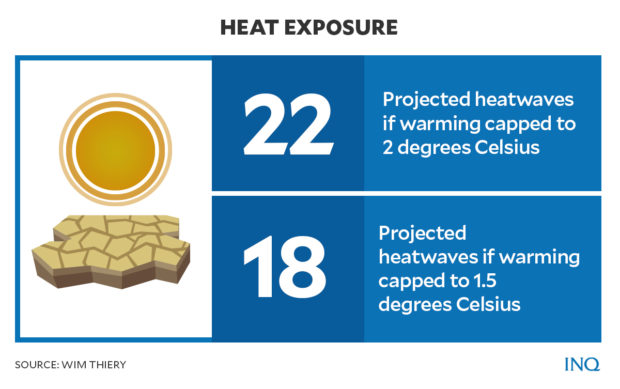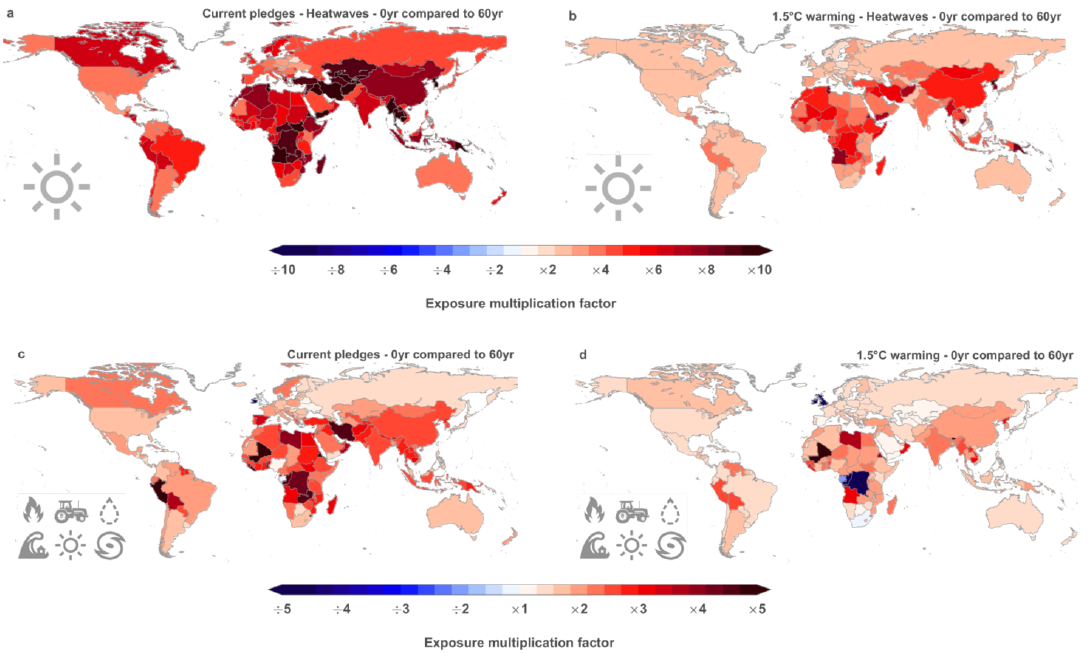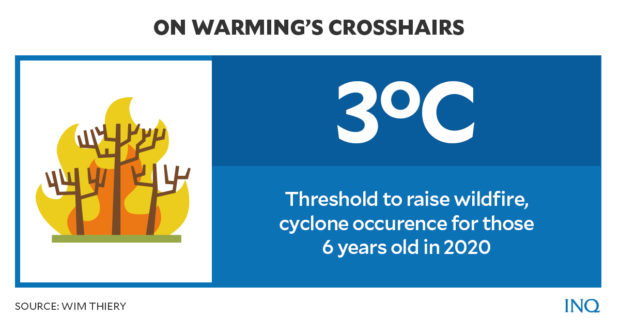‘The kids aren’t alright’: Global warming elevates risks to children
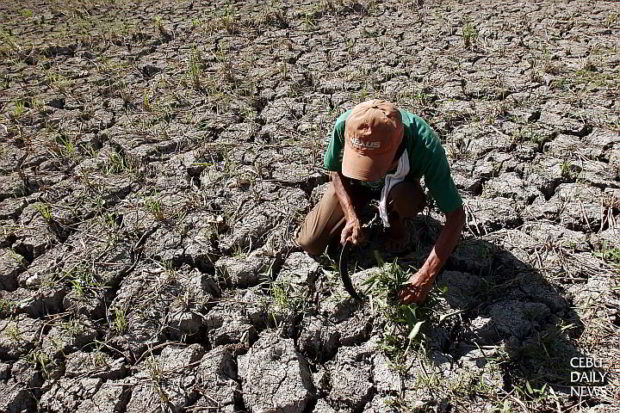
FILE PHOTO: During a dry spell in April 2007, a farmer struggles to tend to his rice paddy in Carcar town, south Cebu.
MANILA, Philippines—People worldwide are already seeing up close the impact of global warming but scientists are warning that children who have yet to be born are highly likely to bear the brunt of a fiercer climate future.
Wim Thiery, along with other researchers from the Vrije Universiteit Brussel (VUB), concluded that newborns across the globe— including children to be born few years from now—will face disproportionate increases in extreme weather events that would include heatwaves, droughts, crop failures, river flooding, and wildfires.
Children from low-income countries would be more exposed to future harsher events caused by climate change.
Grim climate future
According to the paper published in Science Magazine—the peer-reviewed academic journal of the American Association for the Advancement of Science (AAAS)—people born in 1960 were estimated to experience on average four heatwaves during their lifetimes.
Those born in 2020 will on average face 30 scorching heatwaves— seven times more than their grandparents’ generation—if the current emission pledges laid out in the Paris Climate Agreement are met.
Article continues after this advertisementThe Paris Agreement aims to strengthen the global response to the threat of climate change by keeping the global average temperature rise this century well below 2 degrees Celsius above preindustrial levels.
Article continues after this advertisementThe pact also seeks to pursue efforts to limit the temperature increase to 1.5 degrees Celsius above preindustrial levels.
If global warming is limited to 2 degrees Celsius, the younger generation will experience on average 22 heatwaves or a lesser average of 18 heatwaves if the warming is limited to 1.5 degrees Celsius.
“Our results highlight that lifetime exposure to each of the considered extreme events consistently increases for higher warming levels and younger cohorts,” the researchers noted.
“Changes in extreme event frequencies have relatively little effect on lifetime exposure for cohorts above age 55 in 2020, but this rapidly changes for younger cohorts as they experience increasing extreme events in the coming years and decades,” they added.
Researchers also said in the study that children will experience more frequent wildfires, tropical cyclones, floods, crop failures, and drought.
Under a 3 degrees Celsius global warming pathway, those who were six years old in 2020 will live through twice as many wildfires and tropical cyclones compared to people born in 1960.
River flooding will be three times more, there will be four times more crop failures, and five times more drought. The heatwaves, meanwhile, will be 36 times more.
This means that children are at risk of an almost fivefold increase in extreme event exposure.
Heatwaves will be much stronger with an average occurrence of 44 times for those born in 2020 under a scenario of 3.5 degrees Celsius global warming.
“We found that cohorts above age 55 years in 2020 will on average live an unprecedented life only for heatwaves and crop failures, whereas cohorts aged 0 to 40 years in 2020 will additionally face unprecedented exposure to droughts and flooding above 1.5°C warming,” the researchers said.
“This basically means that people younger than 40 today will live an unprecedented life even under the most stringent climate change mitigation scenarios,” said Thiery in a statement.
Regional and income inequality
The study also found wide disparities among children living across different regions.
Under the current emission reduction pledges, those who are younger than 25 years old in the Middle East and North Africa will have a “particularly strong increase in lifetime exposure,” with on average around seven times more exposure to extreme climate events.
Meanwhile, in sub-Saharan Africa, those who were born in 2020 will on average face 5.9 times more extreme events compared to those who were around 1960 or the preindustrial climate.
In other regions, children will on average experience 3.7 to 5.3 times more extreme weather events.
The researchers also visualized the country-level lifetime exposure to heatwaves, wildfires, river flooding, crop failure, drought, and tropical cyclones among those born in 2020 compared to those who turned 60 during the same year.
Two scenarios are shown in the map — the extreme events if the Paris Agreement are met or around 2.5 degrees Celsius in 2020 and one under a 1.5 degrees Celsius global warming pathway.
Thiery, the lead author of the study, also said scientists found a gap between the young generations in low-income countries and those from high-income countries.
The study detailed that young generations in the low-income countries will experience the strongest increases in lifetime exposure —“with a more than fivefold increase for the 2020 birth cohort under current pledges.”
On the other hand, young generations residing in high-income countries will face the smallest increases in lifetime exposure and the smallest variations across generations.
“While 64 million children born in Europe & Central Asia since 2015 face 4 times more extreme events under current pledges, 205 million children of the same age in sub-Saharan Africa face a sixfold increase in lifetime extreme event exposure, and 50 times more heatwaves,” Thiery said on Twitter last Sept. 27.
While 64 million children born in Europe & Central Asia since 2015 face ~4 times more extreme events under current pledges, 205 million children of the same age in sub-Saharan Africa face an ~sixfold increase in lifetime extreme event exposure, and ~50 times more heatwaves. 10/n pic.twitter.com/K4KqRSGbTX
— Wim Thiery (@WimThiery) September 27, 2021
Researchers explained that rapid growth in population and extreme event exposure “highlights a disproportionate climate change burden for younger generations in the Global South.”
A ‘conservative’ take
The researchers, however, explained that the study is limited to lifetime exposure estimates due to six reasons.
The reasons cited in the study were:
“[The study] treats consecutive extreme events affecting a specific location within a calendar year as one, leading to an underestimation of the number of events in present-day as well as their increase in frequency.”
“[It] only considers changes in the frequency of extreme events, neglecting possible increases in event intensity and duration.”
“[We] do not take into account the effects of compounding extremes, even though, for instance, severe droughts, heat waves, and crop failures tend to co-occur.”
“[We] only consider exposure to local hazards, yet extreme events such as crop failures may lead to regional or even global food price instability when occurring in isolation or concurrently.”
“[We] we employ stringent definitions of extreme events, with for instance heatwaves occurring only about four times in a lifetime on average for the 1960 birth cohort.”
“[Some] aspects of the extreme event categories we consider demonstrate a lagged response to global warming.”
In addition, the researchers acknowledged that some extreme events occur only in some parts of the globe.
“[We] even have strong reasons to think that our calculations underestimate the actual increases that young people will face,” Thiery said.
‘A sobering message’
The study highlights the severity of the climate crisis threat facing the younger generations.
In a separate preprint study recently published in The Lancet, a highly-respected peer review science and health journal, Elizabeth Marks and other researchers found that children across the globe suffer from extreme climate and ecological anxiety and distress.
The term “eco-anxiety” was characterized by researchers as a wide range of painful and complex emotions like worry, fear, anger, grief, despair, guilt, shame, and hope linked to the climate crisis.
READ: ‘Eco-anxiety’: PH children among most stressed by climate crisis
Further, the study by Thiery and his co-researchers shines a light on the call for drastic emission reductions to protect and safeguard the future of children.
“Our results underline the sheer importance of the Paris Agreement to protect young generations around the world,” said Thiery.
“If we manage to drastically reduce our emissions in the coming years, we can still avoid the worst consequences for children worldwide,” Thiery said.
“At the same time, a sobering message for the youth in low-income countries emerges, where incredibly challenging extreme events are robustly projected, even under the most stringent of climate action futures.”
TSB
